Janea Whitacre, Mistress of the trades of millinery and
mantua-making, prepares for "From Freedom to Slavery," a special
program staged in the milliner's shop. Close-ups of the muffs on the
counter can be seen in this post from Wednesday's muff workshop.
The title of this post, a quotation taken from Janea Whitacre's presentation during last week's accessories symposium at Colonial Williamsburg, serves to remind us (as Janea's accompanying dramatic "fashion show" did last Tuesday) of the variety of items that would have been available for bespeaking or ready-made sale at the shop of a milliner and/or mantua maker during the eighteenth century. From suits of clothes (caps, aprons, and kerchiefs) to hats to gloves and mitts to bags to petticoats to buckles and jewelry to cloaks and capes to gowns and jackets, the milliner, as Janea explained, was so called because she sold a "million" things.
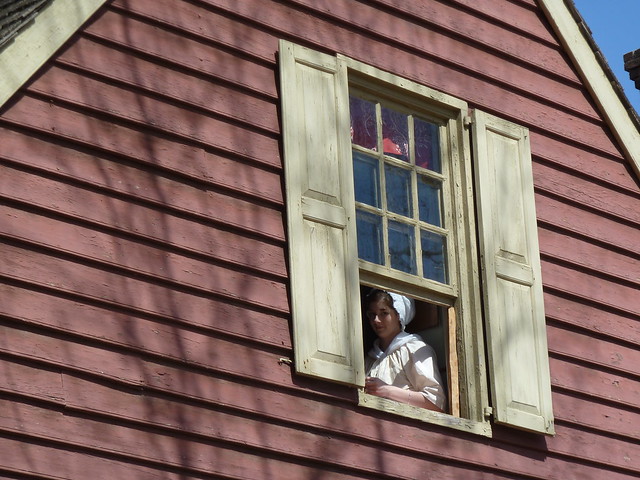
A young apprentice catches the early afternoon light in the upper
window of the Margaret Hunter shop.
The gorgeous white short cloak and the white satin accessories below it (a stomacher and small bag) were bridal accessories featured in one of the scenes from Tuesday's symposium fashion show. While white wedding gowns didn't become the norm until Queen Victoria popularized them in 1840, they weren't entirely unheard of. CW's collection includes a cream satin gown dating to 1756 which is documented to have been made and worn specifically as a wedding gown (though I'm sure it was subsequently used on other formal occasions as well). You can see this gown in one of our previous posts.
The hat below, though a reproduction made in the shop, is a very special antique in and of itself. It was made by Colonial Williamsburg's very first milliner in the 1950s and is an exact copy of the silk-covered hat currently featured in the "Fashion Accessories from Head to Toe" exhibit. More specifics and the option to super-zoom on the original hat can be found in the exhibit's online counterpart.
The reproduction hat made in the shop in the 1950s, now
brought out and given a place of honor to mark the symposium
and current museum exhibit.
The original hat, currently on display in the
DeWitt Wallace Museum at CW.
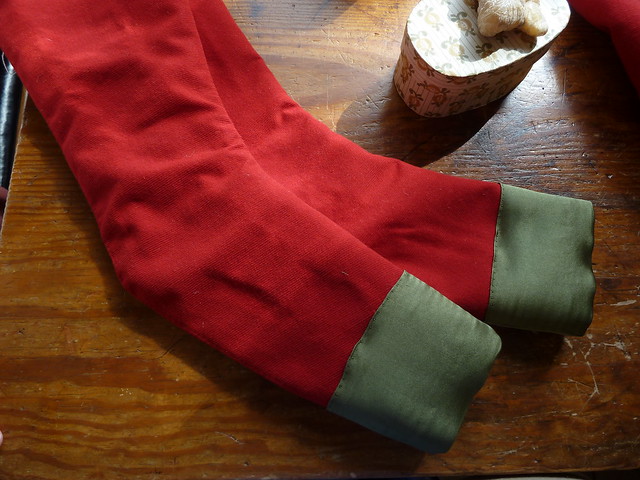
The in-progress sleeves of a wool riding habit which was
featured in the symposium's fashion show. The waistcoat for the
Doris Warren, journeywoman of the trades of millinery and
mantua-making, discusses some of the shop's treasures with visitors.
If you're curious to learn more about the practice of the needle trades at CW, you might enjoy exploring these links from past CW podcast interviews.

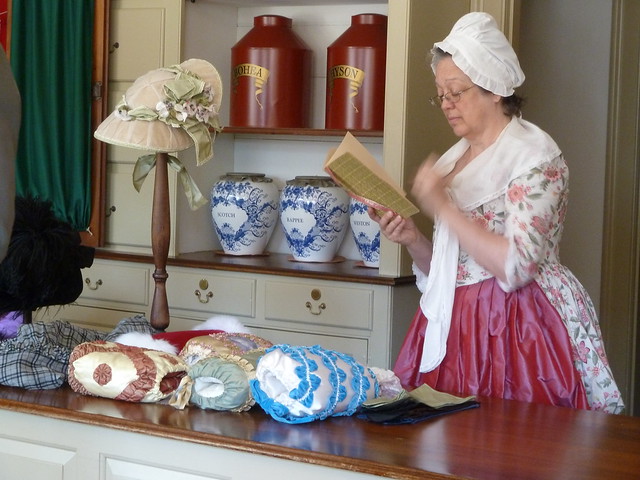

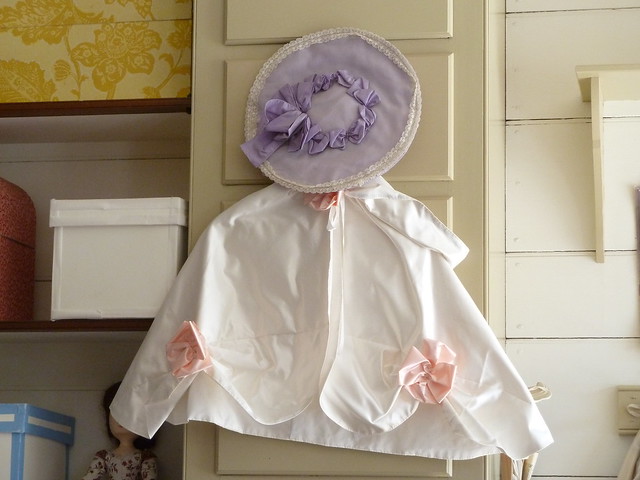

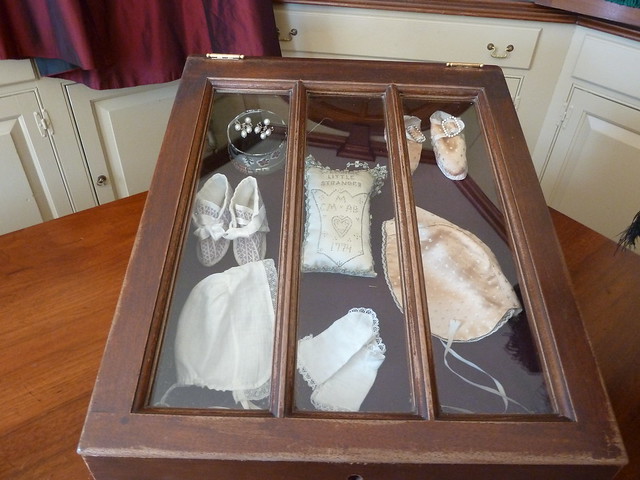

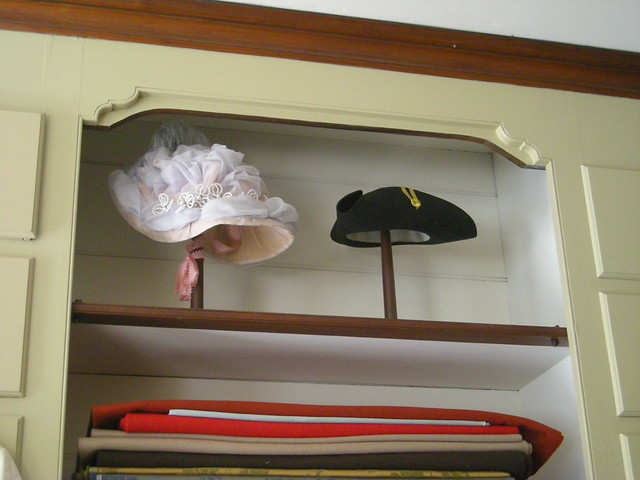
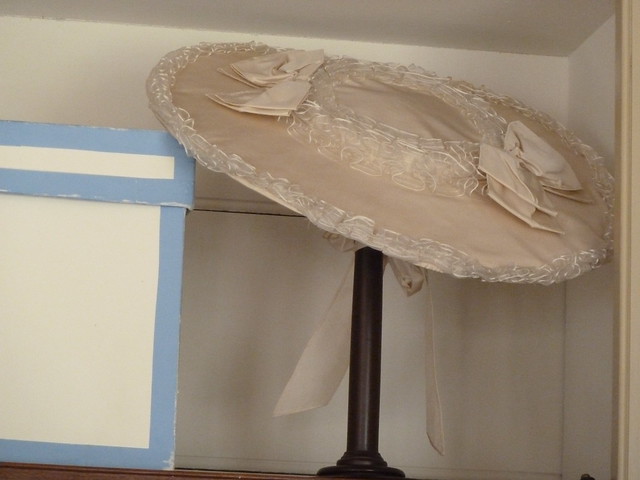
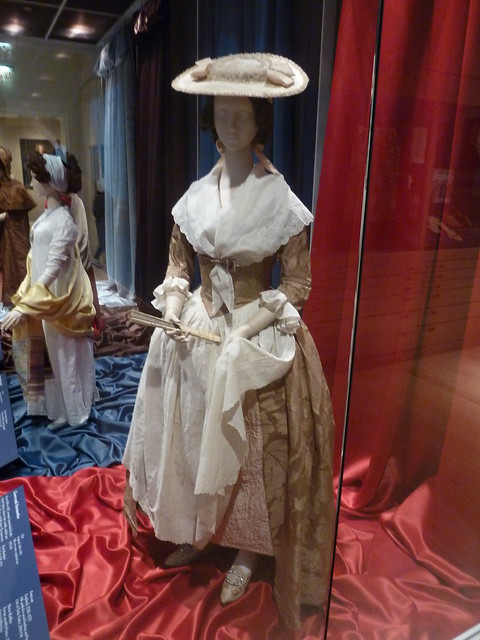
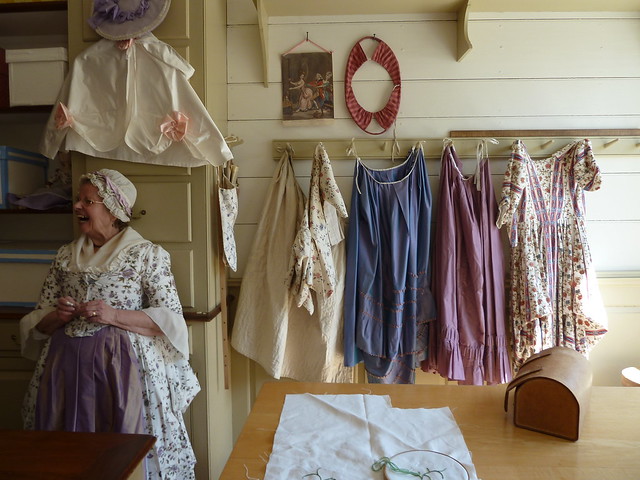
I wished I'd taken a closer look at that hat with the "netting" over it and sage green ribbons in the Millinery. Did you notice if it was a netting or sheer fabric? That really has perked my interest in making one like it.
ReplyDeleteVal
Val, it's a silk gauze, very sheer. Isn't it stunning? I have a feeling we'll be seeing many new hats like that in the very near future! It's too pretty *not* to make! :-)
ReplyDeleteThank you! I bought two more straw hats and a black felt wool one from Mary Dickenson shop to make some.
ReplyDeleteOhhhhhhhhhhhhh, now I see the connections. How about "bespeak". I don't quite get that. I also like how you tied in the program we attended with the trade. A lot falls into place for me now!
ReplyDeleteLaurie
Merci beaucoup pour cet article de blog. Merci beaucoup.
ReplyDelete